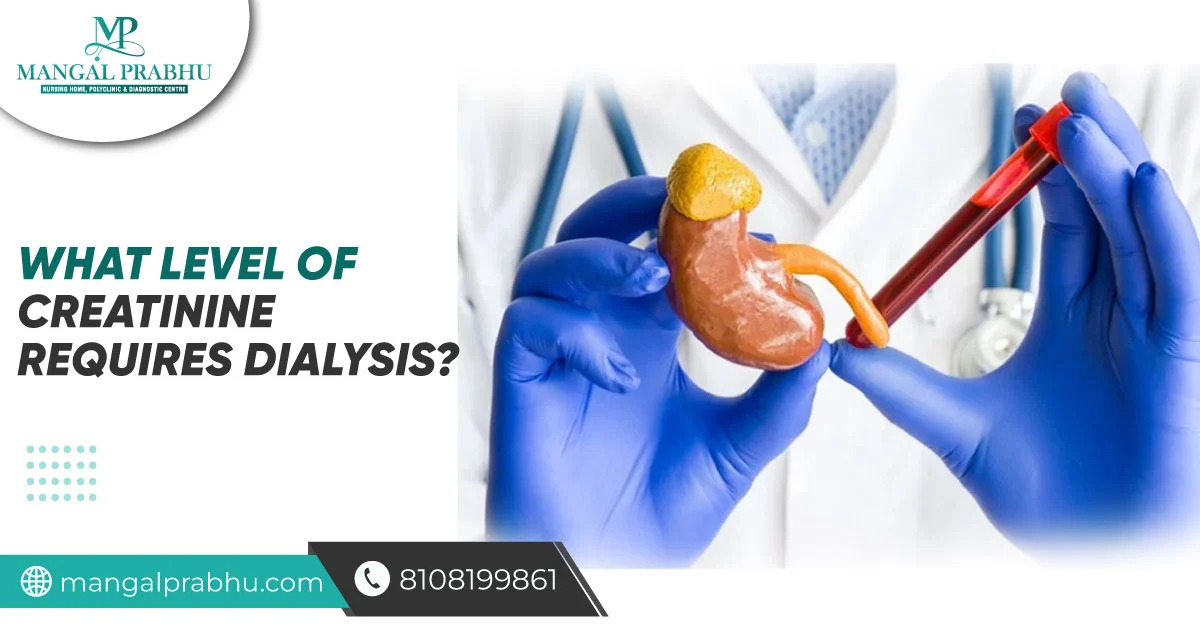
I. Introduction
Kidneys act as tireless filtration plants, eliminating these wastes, one of which is creatinine, a residue from muscle activity. However, if this filtration plant malfunctions, you end up exhausted and overwhelmed by toxins. That’s where the need for dialysis arises, a complex decision shrouded in medical jargon and uncertainty. Dialysis acts as a trusty pit crew, clearing the waste and helping an individual get back on track. Thus, it would be best for an individual to seek the best Dialysis Center in Navi Mumbai like Mangal Prabhu Hospital. However, understanding this critical crossroads and navigating the maze of creatinine help in making informed decisions.
II. Normal Range of Creatinine Levels
Understanding the creatinine level helps in making quick decisions without any hassle. However, normal creatinine levels may range from 0.7-1.3 mg/dL for women, and 0.9-1.4 mg/dL for men are guidelines, not absolutes. Think of a bodybuilder compared to a petite woman – comparing just their creatinine wouldn’t tell the whole story. Just like every individual is unique, their normal creatinine level can vary slightly depending on several factors:
- Age: Muscle mass naturally decreases with age, potentially lowering creatinine levels.
- Sex: Men tend to have more muscle mass, leading to slightly higher creatinine levels than women.
- Race: Ethnicity can influence muscle mass and slightly alter creatinine levels.
- Dehydration: Not drinking enough water and body dehydration leads to a considerable rise in creatinine levels.
- Medication: Some medications may also influence the level of creatinine.
Also Read: What is the Dialysis Process?
III. When is Dialysis Necessary?
Identifying creatinine levels helps in making the right decision for dialysis. According to the best Nephrologist in Navi Mumbai when the estimated glomerular filtration rate (eGFR) is less than 15mL/min/1.73m² an individual may require dialysis. Symptoms whisper important clues, thus when an individual experiences fatigue, nausea, and unexplained weight loss, indicates significant impairment and demands investigation. Considering crucial elements like individuals’ overall health, age, and preferences regarding treatment type and lifestyle helps in making decisions for dialysis.
IV. Other Factors to Consider
The creatinine stage acts as the starting point, but other critical factors play their roles:
- Complications like uncontrolled diabetes or heart disease can act as unexpected plot twists, potentially necessitating earlier intervention, much like unforeseen obstacles on a journey.
- Rate of decline: This refers to the speed of kidney function deterioration. Imagine a rapid leak compared to a slow drip; both require repairs but at different urgency levels.
- Patient’s voice: This is the heart of the equation. The patient’s values, desired quality of life, and active participation in decision-making are paramount. Remember, it’s their journey, and their voice matters most.
V. Conclusion
Dialysis is a powerful tool, but it’s not a magic fix. It’s a collaborative effort, like a team strategizing the best route to the finish line. A nephrologist at Mangal Prabhu Hospital is your expert guide, interpreting signs, navigating complexities, and working alongside you to craft a personalized plan. Remember, informed decisions based on a holistic approach, not just a single number, unlock the best possible outcome for your kidney health and overall journey.
